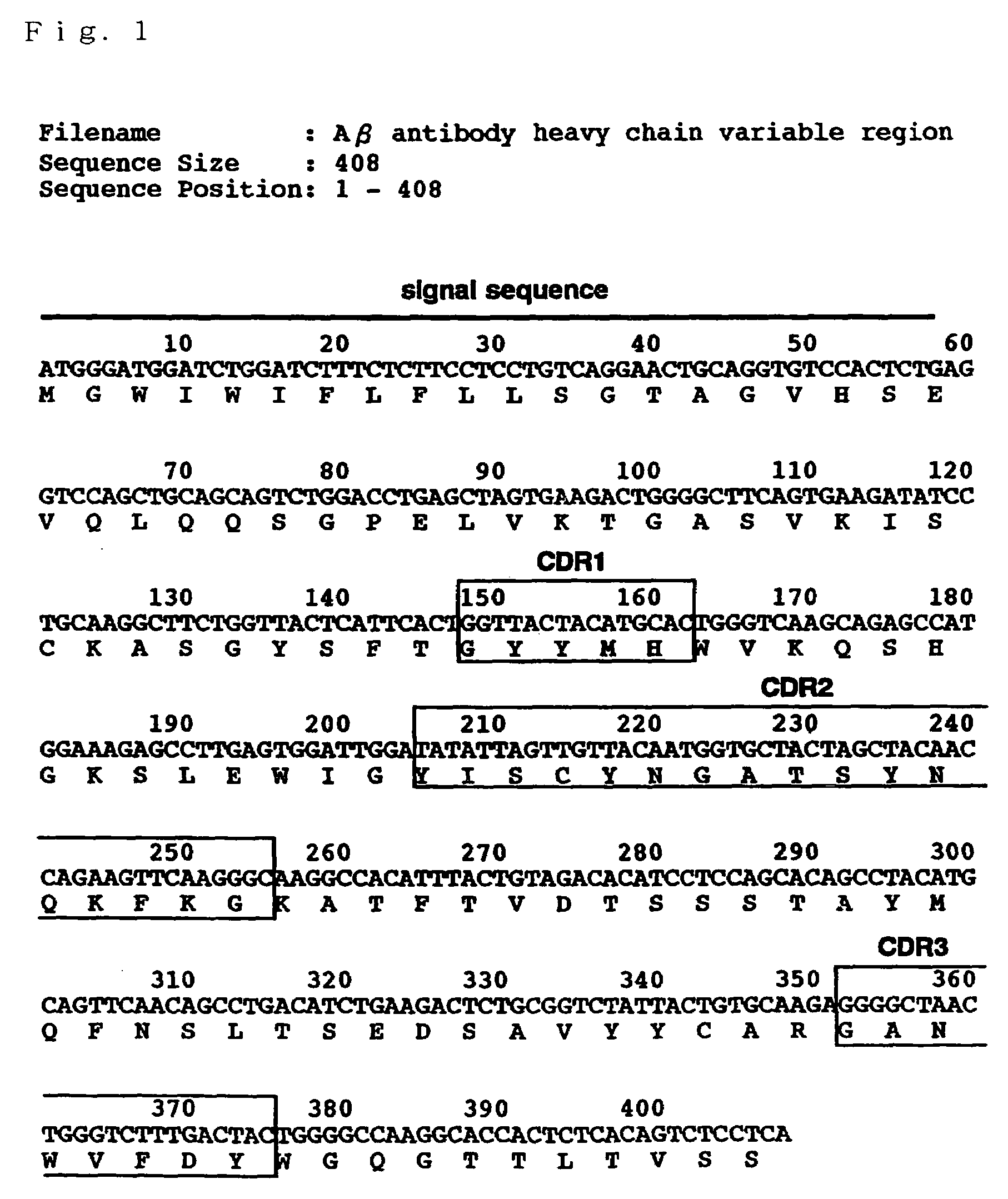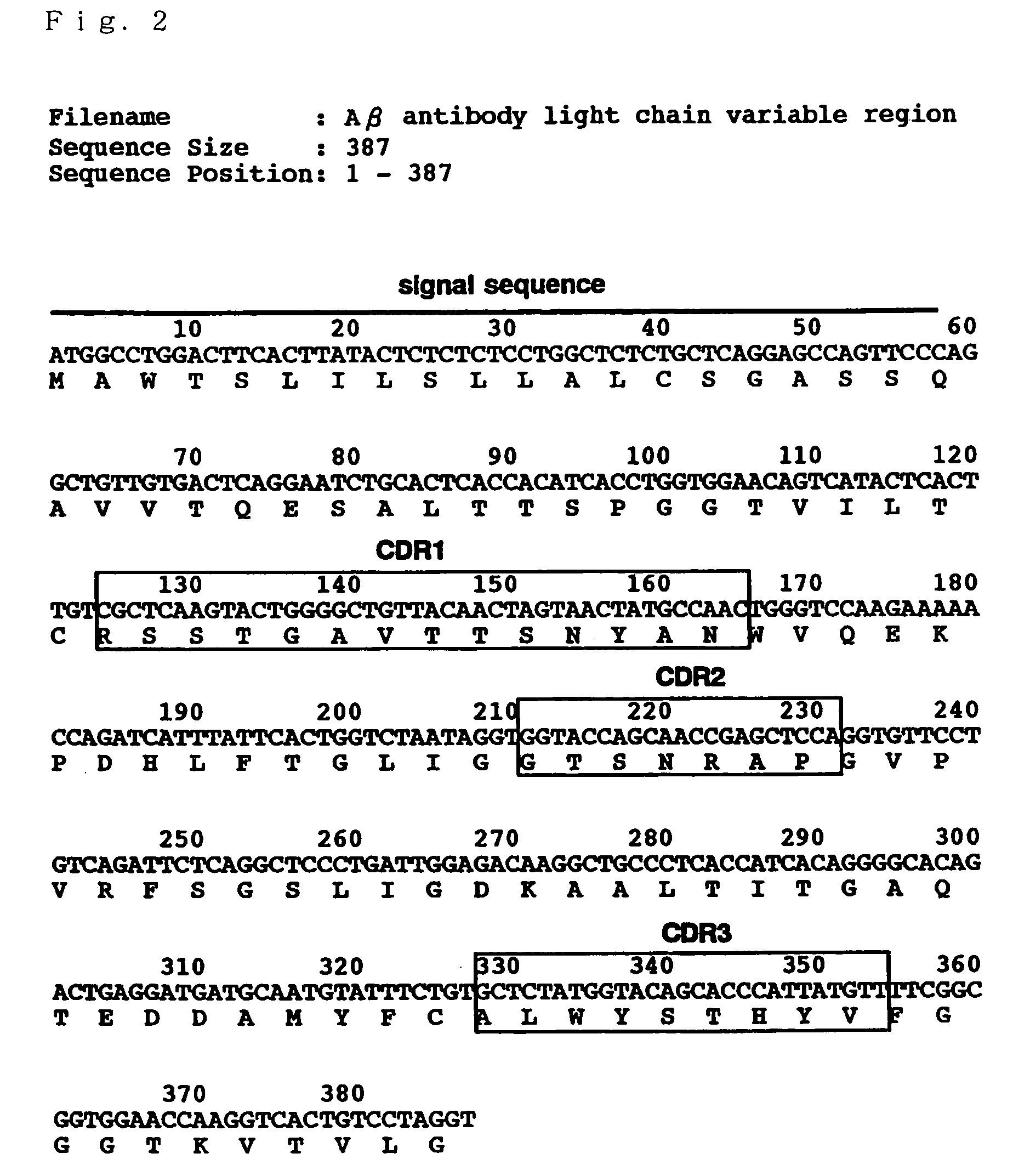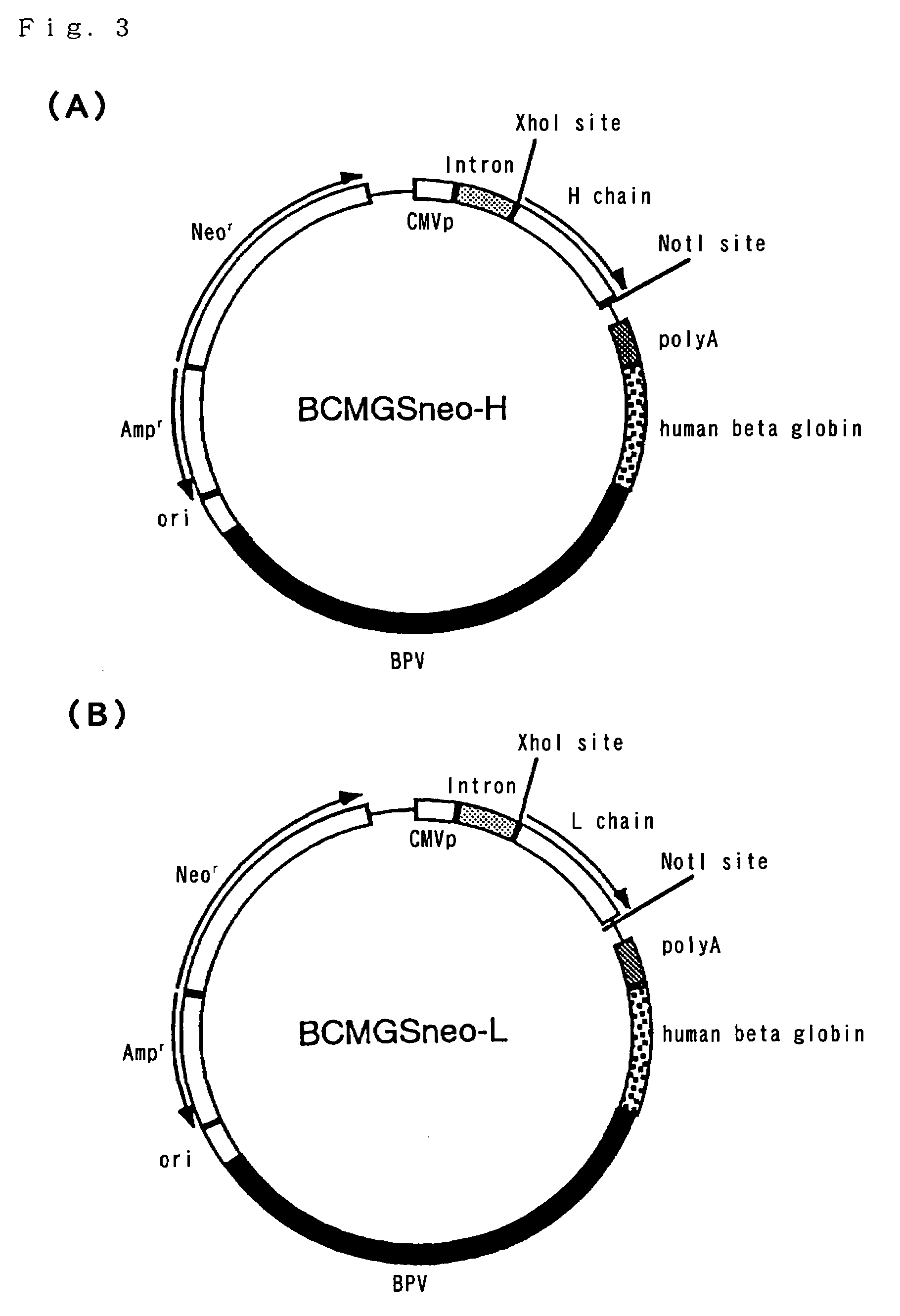Antibody recognizing GM1 ganglioside-bound amyloid beta-protein and DNA encoding the antibody
a technology of amyloid beta and antibody, which is applied in the field of antibodies and gene encoding the antibody, can solve the problems of difficult diagnosis of alzheimer's disease, senile plaque formation, and neurofibrillary tangles cannot be found by observation from the outside, and achieve the effect of effective diagnosis and treatmen
- Summary
- Abstract
- Description
- Claims
- Application Information
AI Technical Summary
Benefits of technology
Problems solved by technology
Method used
Image
Examples
example 1
Preparation of IgG Antibody
1-1) Determination of Gene Sequence of Variable Region
[0108]A gene sequence of a variable region of a hybridoma (herenafter, “Aβ1-42C” will be referred to) producing the antibody (antibody 4396) described in the above-mentioned paper (K. Yanagisawa, J. McLaurin, M. Michikawa, A. Chakrabartty, Y. Ihara, FEBS Lett., 420, 43 (1997)) was determined by the following procedure. Note here that Aβ1-42C is a hybridoma prepared using GM1-Aβ purified from the brain as an immunogen and the antibody 4396 is an IgM class antibody which specifically recognizes GM1-Aβ.
[0109]Firstly, by using “ZAPcDNA kit” (Stratagene Corporate), cDNA library of Aβ1-42C was constructed. The construction method followed the protocol of the kit. Aβ1-42C was cultivated in DMEM / 10% FCS and poly A+RNA was prepared from about 3×107 cells. After a first chain cDNA was synthesized from 5 μg of A+RNA, a second chain cDNA was synthesized. Then, a linker (having EcoRI and XhoI sites) was ligated ther...
example 2
Investigation of Binding Property of Antibody 4396C to GM1-Aβ
[0116]In order to clarify the molecular mechanism of the initiation of the amyloid fibril formation by GM1, by using GM1-containing liposomes, a kinetic analysis and a morphologic analysis were carried out.
2-1) Preparation of Aβ Solution
[0117]Firstly, synthetic Aβ1-40 (Peptide Inst., Osaka, Japan; Lot. 501001) was dissolved in 0.002% ammonia solution at about 500 μM and the solution was centrifuged at 100,000 rpm for 3 hours (TLA 120.0 Rotor, Optima T L, Beckman, Calif., USA). Only the upper two-thirds of the supernatant was collected and the concentration of Aβ was determined. Aliquotes of the Aβ solution were stored at −80° C. until use. Immediately before use, the Aβ solution was dissolved and diluted with physiological Tris buffer (TBS: 150 mM NaCl and 10 mM Tris-HCl, pH7.4) to an optimal concentration.
2-2) Preparation of GM1-Containing Liposomes
[0118]Cholesterol, sphingomyelin (Sigma-Aldrich, St. Louis, Mo., USA) and ...
example 3
Verification of Capability of Inhibiting Amyloid Fibril Formation by Antibody 4396C
3-1) Investigation of Binding Capacity of Antibody 4396C
[0124]It was investigated whether or not the antibody 4396C prepared in Example 1 specifically recognized Aβ bound to GM1 (GM1-Aβ) in liposomes. Firstly, liposomes containing GM1 prepared in Example 2 or liposomes lacking in GM1 (control) were incubated with the Aβ solution prepared in Example 2. Incubated mixture was stored on ice until loading on a carbon-coated ormvarnickel grid. It was incubated with 1% bovine serum albumin at 12° C. for five minutes, thereby blocking non-specific binding. Then, each grid was treated with the antibody 4396C or an antibody 4G8 (a well-known antibody recognizing Aβ: K. S. Kim, et al., Neuriosci. Res. Commun. 2, 121 (1988)) at the final concentration of 20 μg / ml at 12° C. for 45 minutes. Thereafter, the grid was treated with 5 nm of gold-labeled anti-mouse IgG (British BioCell International Ltd.) that was dilute...
PUM
| Property | Measurement | Unit |
|---|---|---|
| length | aaaaa | aaaaa |
| length | aaaaa | aaaaa |
| molar concentration | aaaaa | aaaaa |
Abstract
Description
Claims
Application Information
 Login to View More
Login to View More - R&D
- Intellectual Property
- Life Sciences
- Materials
- Tech Scout
- Unparalleled Data Quality
- Higher Quality Content
- 60% Fewer Hallucinations
Browse by: Latest US Patents, China's latest patents, Technical Efficacy Thesaurus, Application Domain, Technology Topic, Popular Technical Reports.
© 2025 PatSnap. All rights reserved.Legal|Privacy policy|Modern Slavery Act Transparency Statement|Sitemap|About US| Contact US: help@patsnap.com



